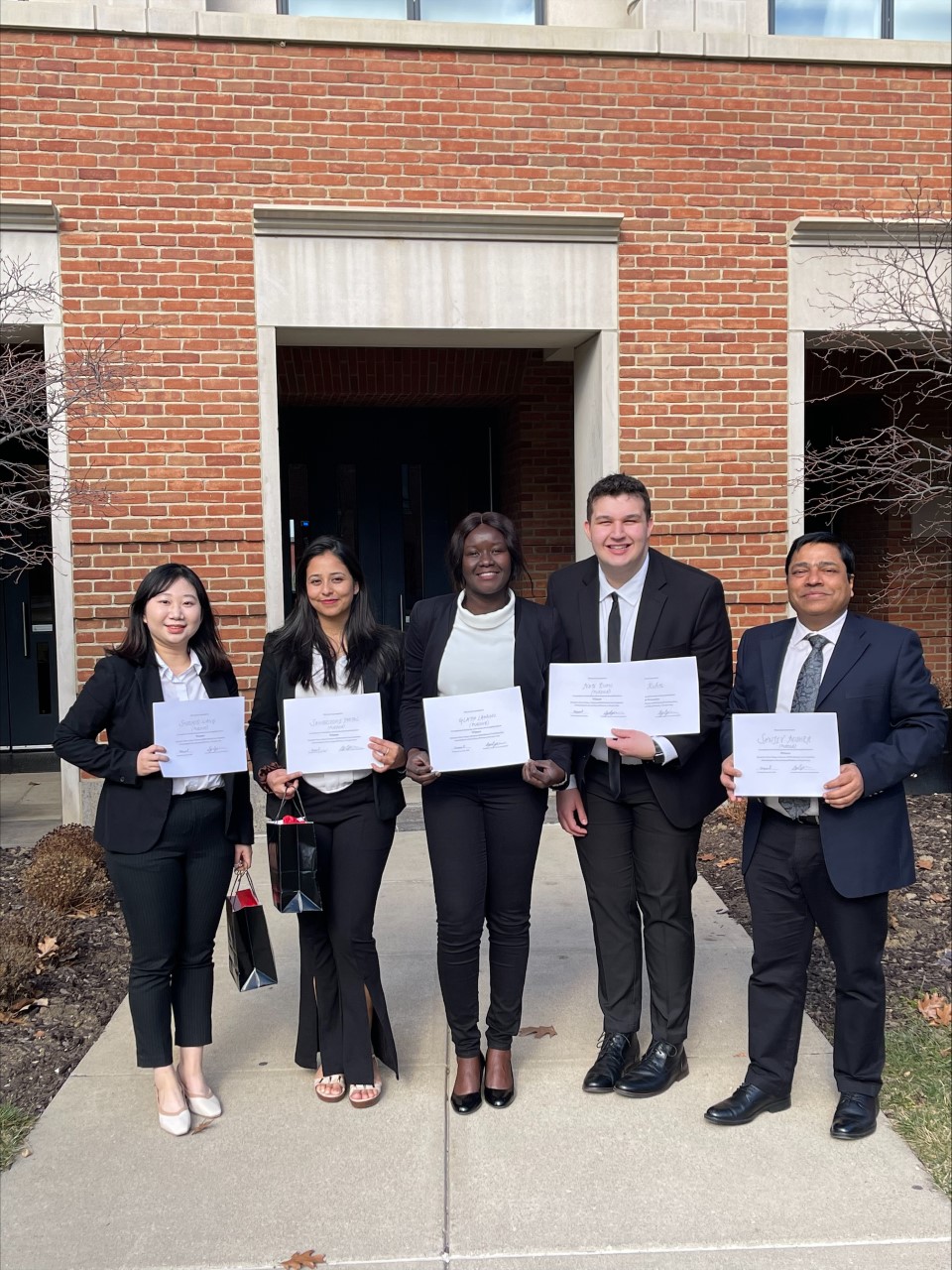
The Mitchell E Daniels, Jr. School of Business earned another accolade when the team won Ohio State University’s prestigious case competition. The competition sponsored by power management giant Eaton included students in a graduate Human Resource Management program (MSHRM). Eaton sought to address its current challenge: to reach Eaton’s 2030 goal of having a workforce that better represents women and more ethnic groups, particularly to have a 40% female workforce and one that is 34% ethnically diverse.
The team embodied diversity itself: Nate Kuhn from the U.S., Shou-min Wang from Taiwan, Sanjiv Mishra from India, Gladys Lamunu from Uganda and Sambriddhi Dhital from Nepal.
“We were from five different nationalities and the client thought we had been working together regularly though we were working together for the very first time. Professor [Brian] Chupp organized team building activities to help us teammates get comfortable with each other and that helped us collaborate better,” said Lamunu.
The team began by studying Eaton’s Sustainability and Diversity report, so they knew the company statistics. Academic Director Professor Chupp went the extra mile by driving the team all the way to Ohio State and coaching them through the logistics of the competition, a gesture that endeared him even more to his students. The team was given 24 hours to understand the challenge and come up with solutions, so strategizing was key.
“Each of us had big ideas, and we put them together as an iceberg model to visually convey our key recommendations on how to make Eaton more diverse and inclusive,” said Wang.
Team members’ prior industry experience in consulting, coupled by the experiences of participating in case competitions and hands-on teaching of the MSHRM program, helped the team seal the win. The Inclusion Accountability Program taught n by Professor Chupp and the Diversity and Equity classes by Organization Behavior Professor Ellie Kossek allowed them to ground their ideas firmly.
“Professor Ellen Kossek made us aware of diversity issues because we come from a background where, for us, diversity is only male and female gender issues. We were not aware of racial diversity or the protected classes as much,” said Mishra.
Being able to apply classroom teachings to solve real-life problems has been the biggest gain for the team with the Ohio State Case Competition win.
“The 5-Forces analysis, competition analysis and the other theoretical models and the way of solving issues we learned in class, combined with the communication sessions gave us confidence to handle the real case issue,” said Mishra.
The team also attributes their success to the career services office for connecting them with subject-matter experts who prepared them to tackle case issues and circumvent roadblocks to emerge successfully.